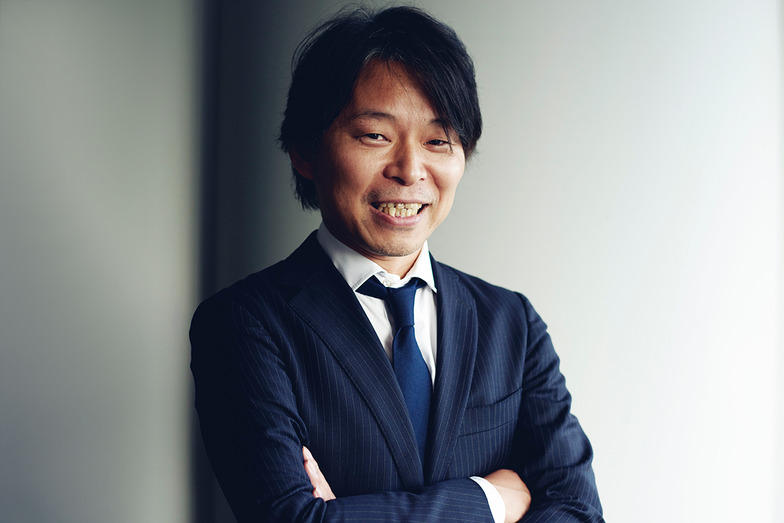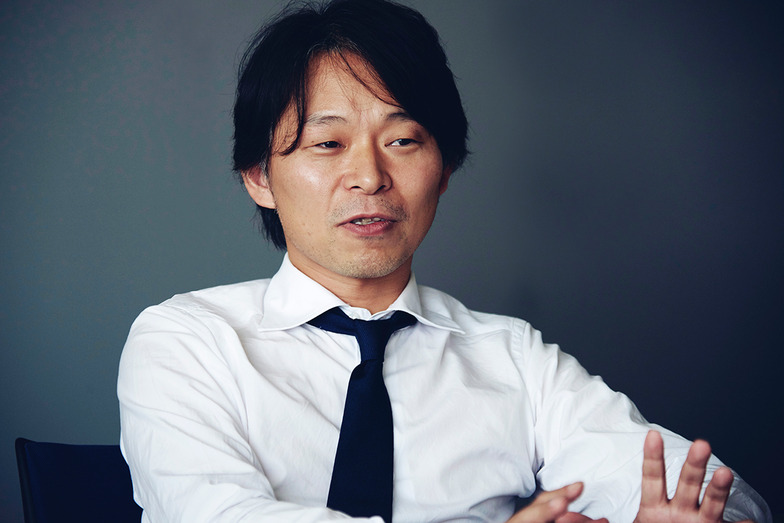Note: This website was automatically translated, so some terms or nuances may not be completely accurate.
Behind BUYMA's 10th Anniversary Campaign: Achieving Both "Brand Awareness" and "Member Acquisition" with a "Story" Everyone Can Relate To
BUYMA, the fashion e-commerce site where you can buy products from around the world. Its 2015 campaign generated significant buzz through unique creatives like the TV commercial series "Buy the World" and the online video "The Kind Drone," as well as parodies on variety shows. As a result, it successfully increased both brand awareness and new member acquisition.
The creator driving this project was Takashi Sakuma of Dentsu Inc. He shared the secrets of "emotional communication" unique to next-generation creators—a strategy applicable to any company facing the challenge of simultaneously building brand awareness and acquiring members.
Interview & Writing: PR Table
※You can also read the full story about this case study on PR Table.
Branding Through the "Story" a Brand Realizes

─The TV commercials for the "Buy the World" series feature memorable episodes. What was the goal behind them?
Sakuma: To explain the background, back in 2015, I was tasked with a campaign aimed at further expanding BUYMA's recognition and acquiring members as it approached its 10th anniversary. BUYMA's unique feature is that sellers based overseas purchase and ship items after receiving orders. This allows users to obtain products unavailable in Japan, setting it apart from other fashion e-commerce sites.
Actually, about two weeks before joining this project team, I happened to buy a pair of sneakers I'd wanted on BUYMA (laughs). Building on that personal experience, I took a step further to consider what value consumers gain from this system and developed hypotheses. From there, I decided to express the private story behind the purchasing action – "acquiring something you've always wanted" – through TV commercials and other media. The campaign's core purpose was to build the brand by conveying the essential value BUYMA delivers through these stories.
Achieving both branding and sales promotion objectives
─ In e-commerce site communications, I think there's often a tendency to rely on purely transactional methods—like announcing prices or limited-time sales—to drive traffic to the site. How did you balance both?
Sakuma: I'm not solely responsible for branding. I develop strategies with a holistic view of what's truly needed to significantly boost conversions. At the time, app traffic exceeded browser traffic, and the purchase conversion rate was higher on the app. Since the app was only available for iOS and the Android version was still in development, I proposed accelerating its launch to align with our mass communication efforts.
Branding is crucial to effectively convey BUYMA's appeal and acquire users in a meaningful way. At the same time, short-term sales promotion (SP) elements like "limited editions" and "sales" were also necessary. SP is often thought to be incompatible with branding, which communicates the worldview of a product or service. However, I established a strategy that successfully balanced both.
─ Wasn't it difficult to achieve both goals solely through TV commercials?
Sakuma: The "Buy the World" CM series featured four individuals—Rika, Kojima Haruna, Aki, and Matayoshi Naoki—each sharing an episode about "something they wanted." We aimed for a spectacular campaign launch, airing the first CM during the highly-watched halftime of the 2018 FIFA World Cup Russia Asian Second Qualifier in June 2015.
But within the 90-second slot, we aired all four individual commercials totaling 75 seconds. That left us with 15 seconds to spare at the end (laughs). So, for those final 15 seconds, we simply ran an announcement combining the text "BUYMA NIGHT SALE" with an animation of dynamite. To make that work, we also asked them to run a one-day-only sale.
─ So you managed to balance branding and sales promotion that way. How was the response on the first day?
Sakuma: The 15-second ad, with the dynamite ticking down the countdown, became a hot topic because it was so interesting. It was a limited-time sale announcement running from right after the broadcast until 2 AM the next day, but the response was overwhelming. Immediately after the broadcast, site page views jumped to about 10 times the usual level. Despite preparing for the sale, the server crashed. It caused a bit of a stir with people saying, "It's a sale, but I can't connect to BUYMA!"
─ How did you respond?
Sakuma: We held an emergency meeting with Enigmo, BUYMA's operating company, that very day. We decided to issue a discount coupon called the "SORRY Coupon" starting the next day. We essentially held an "apology sale." The attention paid off, and our membership numbers skyrocketed.
Ultimately, it became a noise-up during our launch. That such a situation led to solid brand awareness growth and member acquisition was thanks to our clients, especially Enigmo's president, who acted swiftly in response.
─ Another major attention-grabber was the online video "The Kind Drone," right? What was the goal behind that?
Sakuma: "The Kind Drone" was a one-night-only TV commercial. We aired it during the December 2015 Figure Skating Grand Prix Final. It featured a naked man and woman performing beautiful classical ballet, with a drone cleverly concealing their "private parts."
The goal was to convey BUYMA's global brand image and the joy of buying and wearing clothes through a fresh, innovative expression. This TV commercial also became a major topic, especially on social media. It was even parodied on variety shows.
Shifting focus according to means and purpose
─ Were there any specific efforts made to emphasize the BUYMA service?
Sakuma: Actually, in "Buy the World," we end by repeating the service name with a different pronunciation: "BUYMA. BUYMA." It even sparked discussions on social media like, "Which pronunciation is the real one?"
The president requested we "emphasize the service name more prominently." Rather than rejecting it as "ruining the atmosphere for a branding ad," we considered how to make it uniquely memorable. Providing that kind of idea is precisely what's expected of us, isn't it?
While the campaign's "purpose" from a management perspective is to increase awareness and membership, with TV commercials as one "means," we produce the whole thing with a sense of constantly changing the camera lens and focus. If you only think about either the purpose or the means, you lose sight of the whole picture. Sometimes it's crucial to step back and get a bird's-eye view, or to shift the focus.
─ Changing the focus. That's interesting. What does that entail?
Sakuma: When considering the overall "purpose," we ask whether a commercial as a "means" is necessary or not... If it is, we make creating an excellent commercial itself the "purpose" and then meticulously examine the "means" of what content to create. Flexibly switching the camera focus allows the team to deliver maximum performance.
We start with a bird's-eye view, then shift focus. And we turn the means into the purpose. Conversely, by brainstorming lots of ideas like "Wouldn't it be fun to do a campaign like this?", we return to the original big "purpose" and think "Maybe that insight means this." We move back and forth between both approaches.

Communication is emotion—planning that captures people's hearts
─ So you achieved emotional communication through storytelling and IT.
Sakuma: Generally, "strategy" is perceived as left-brain, logical thinking. But when it comes to capturing people's hearts, emotion is what truly matters. Emotion is also the core of branding. For this campaign, we crafted a story around the emotion of "remembering what you wanted and finding it on BUYMA." We then delivered that story by leveraging IT-driven communication. In fact, even after the campaign ended, new member registrations continued to grow. I believe this was possible precisely because we earnestly focused on acquiring genuine members and steadily advanced the necessary branding.
─ What aspects did you focus on in the communication planning?
Sakuma: I believe everything—the "excitement" BUYMA brings when you get what you want, or the "curiosity" people feel when they see the BUYMA NIGHT SALE announcement—is rooted in emotion. This applies not just to this project, but to any initiative: I always look for what resonates with people. Every brand is connected to some emotion. For me, I often find those connections in my own experiences, including personal ones.
─ So everything you experience personally or in daily life becomes a hint.
Sakuma: Even in small things we experience—moments of joy, sadness, embarrassment—there's always an emotional movement. It's crucial to remember these feelings, to unravel how and why your heart was moved at that moment. For those in communication or creative work, I believe all of one's experiences and daily life can be a source of inspiration.
Was this article helpful?
Newsletter registration is here
We select and publish important news every day
For inquiries about this article
Author

Takashi Sakuma
Dentsu Inc.
CDC
Creative Director / Strategist
Joined Dentsu Inc. in 2009. Serves as an Integrated Creative Director/Strategic Planner, focusing on strategic idea development while creating solutions across all media including film, web, PR, and product production. Recipient of numerous awards including a Cannes Lions Silver, AdFest Gold, and Clio Silver. Chair of the Planning Course for Dentsu Inc.'s "School of Ideas" internship program and part-time lecturer at Musashino Art University.









